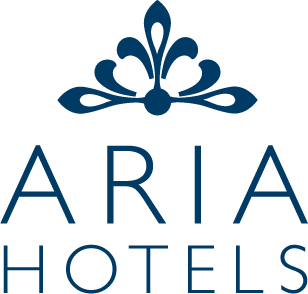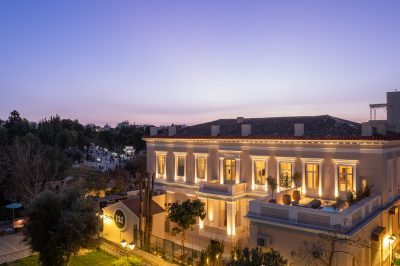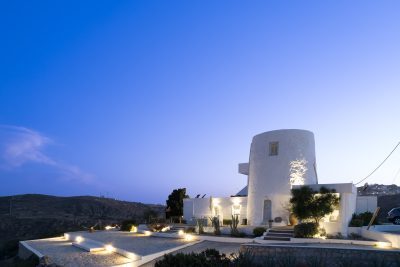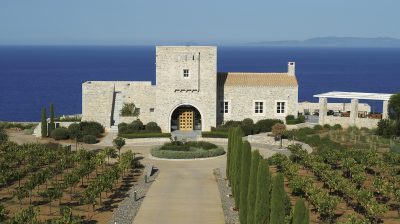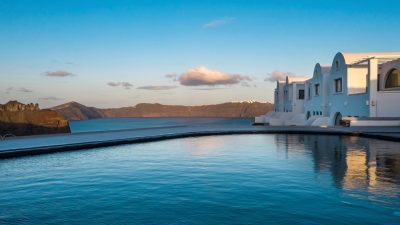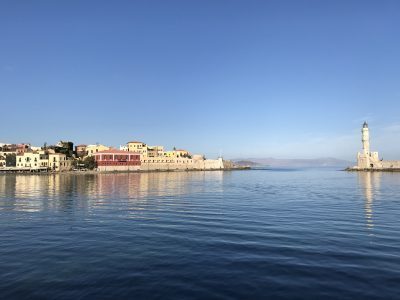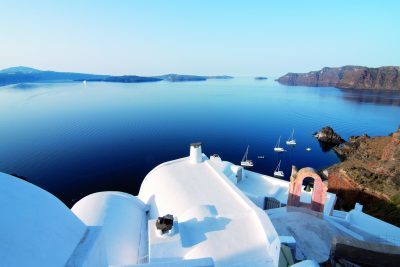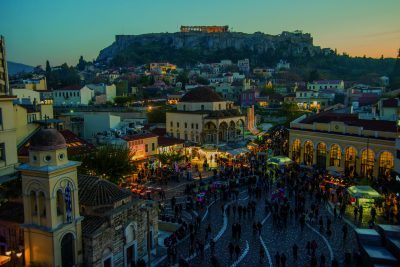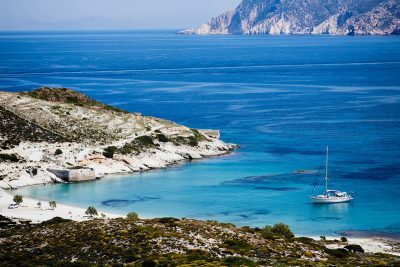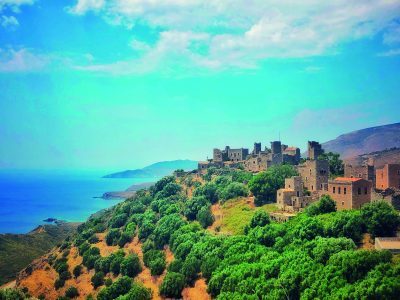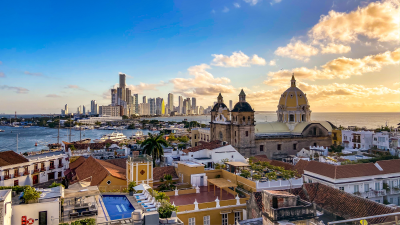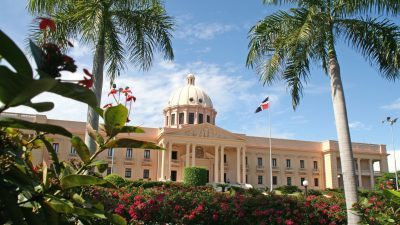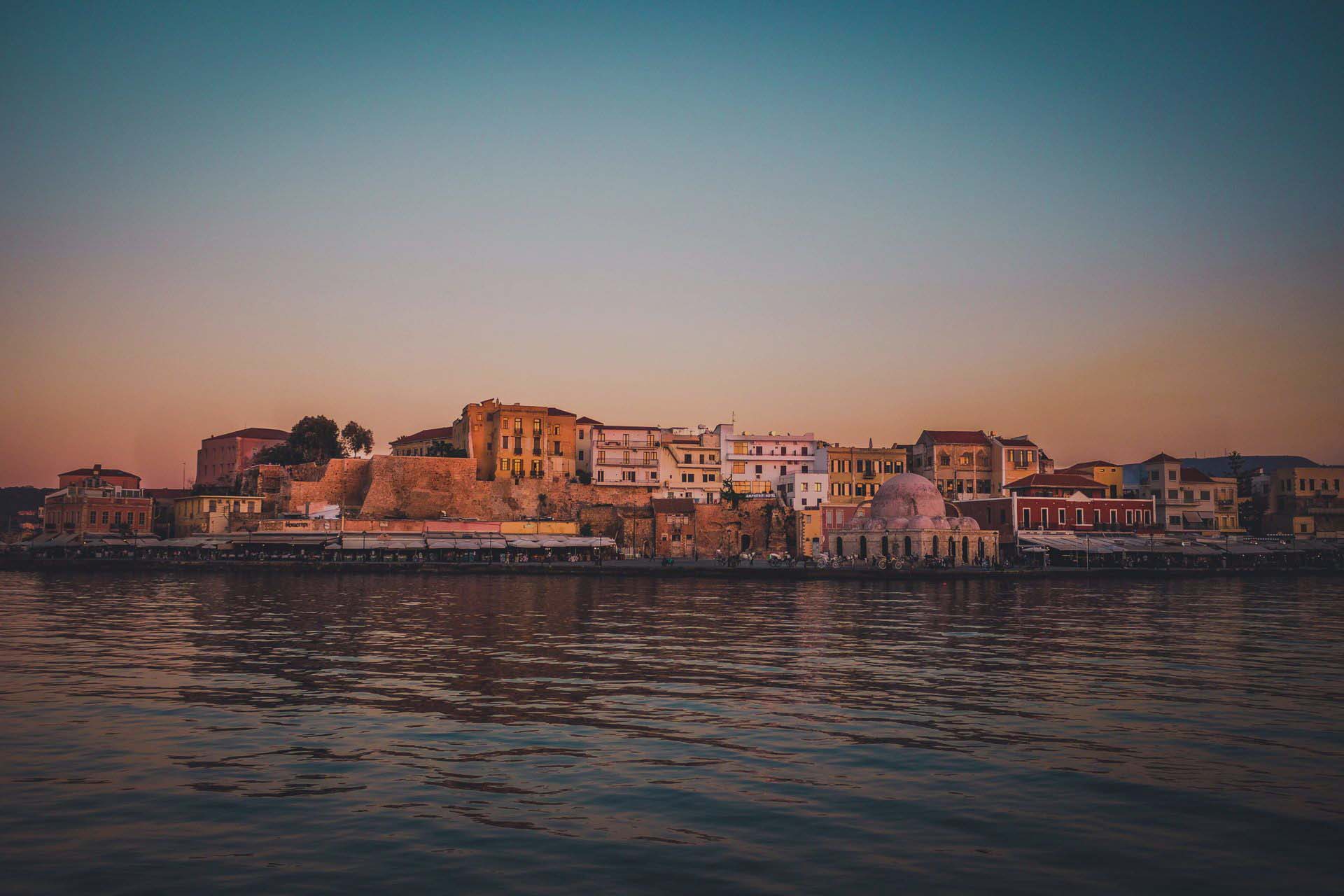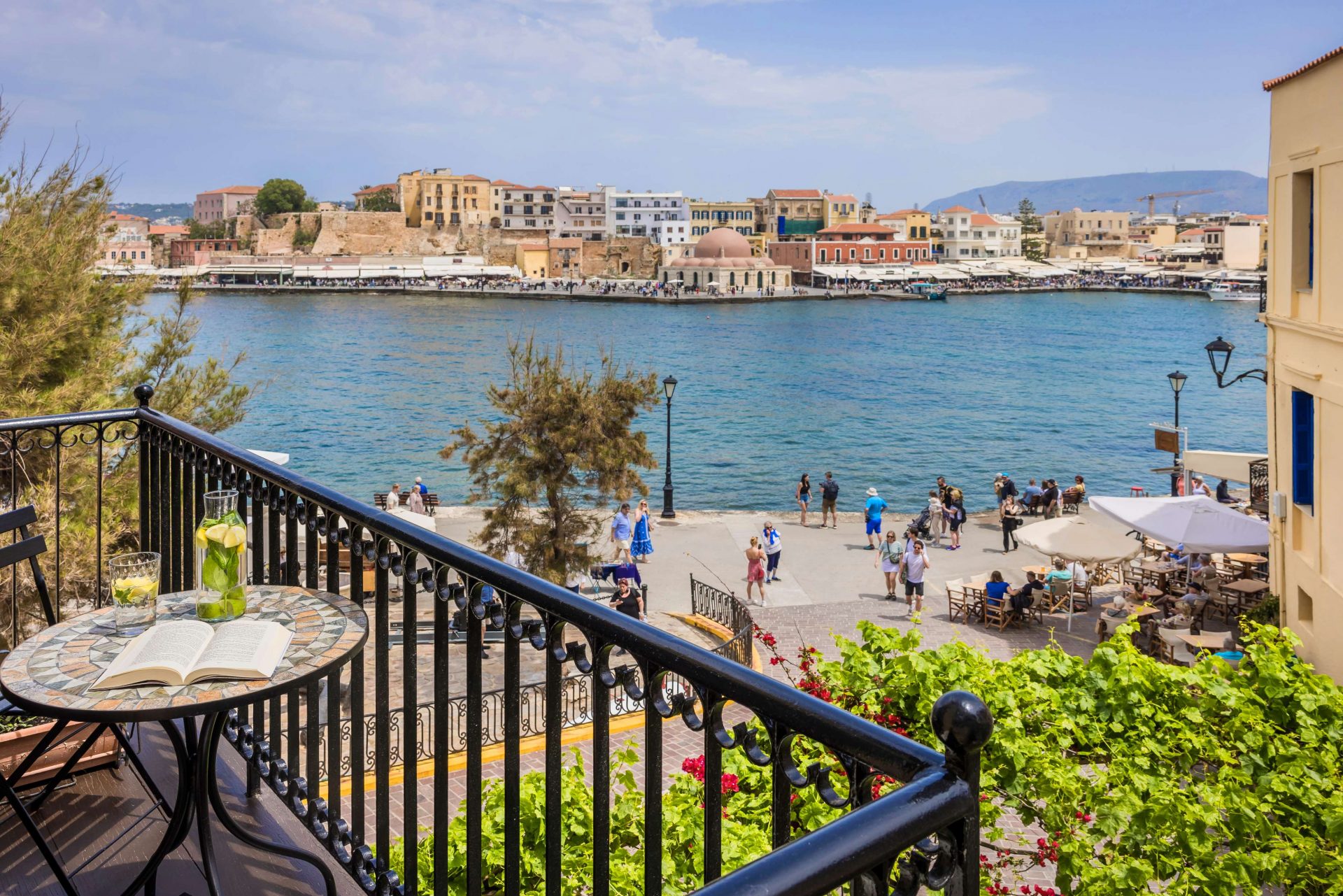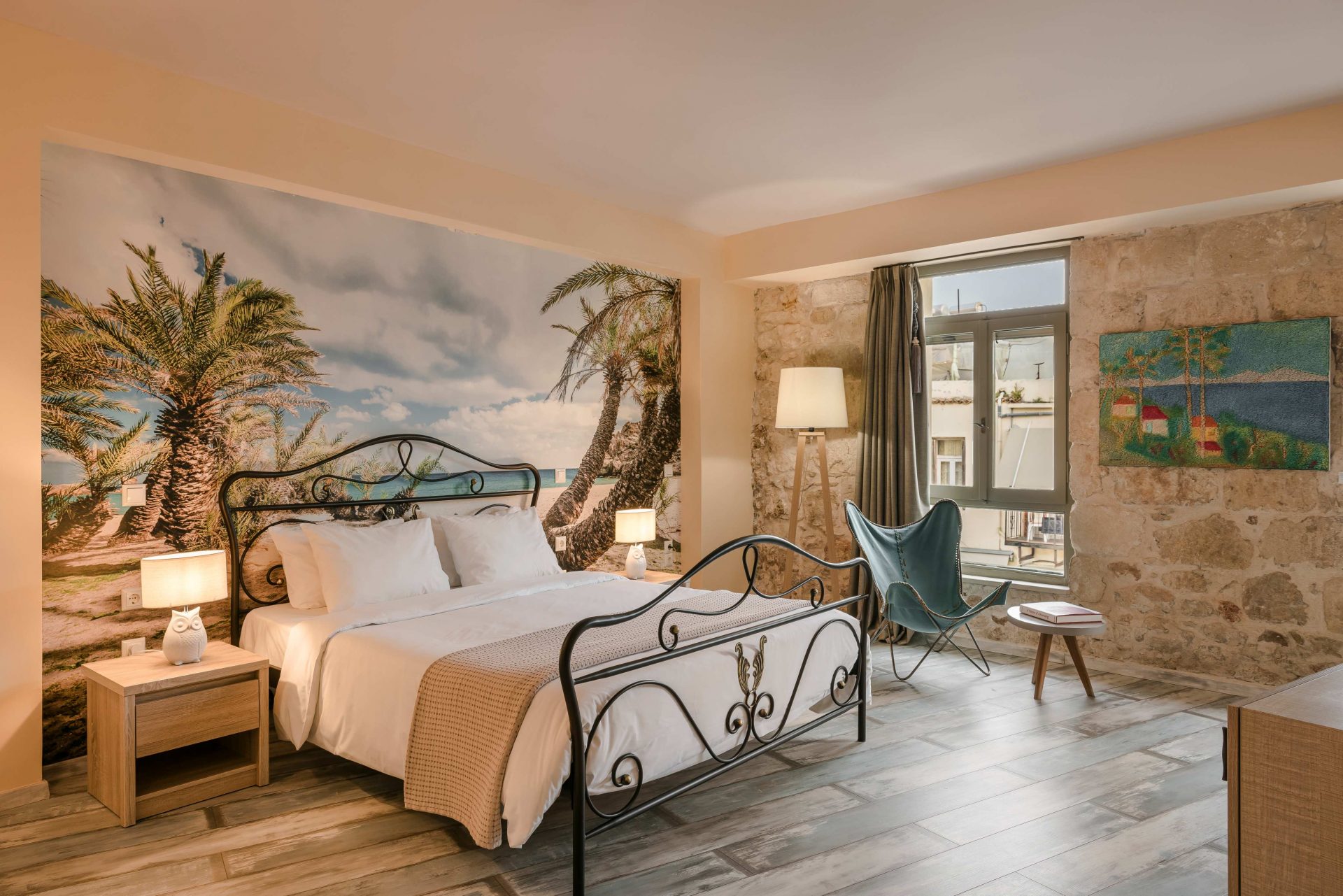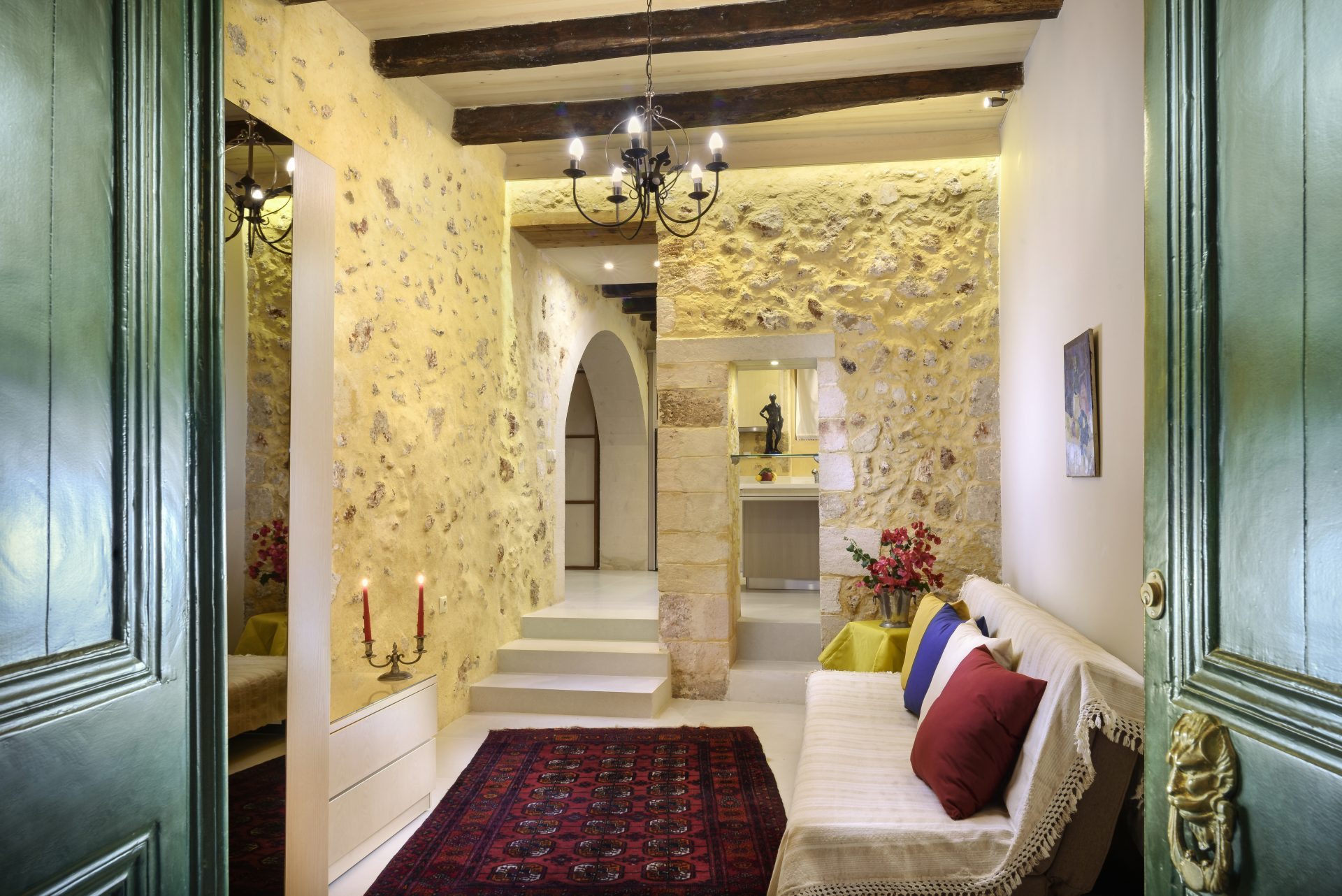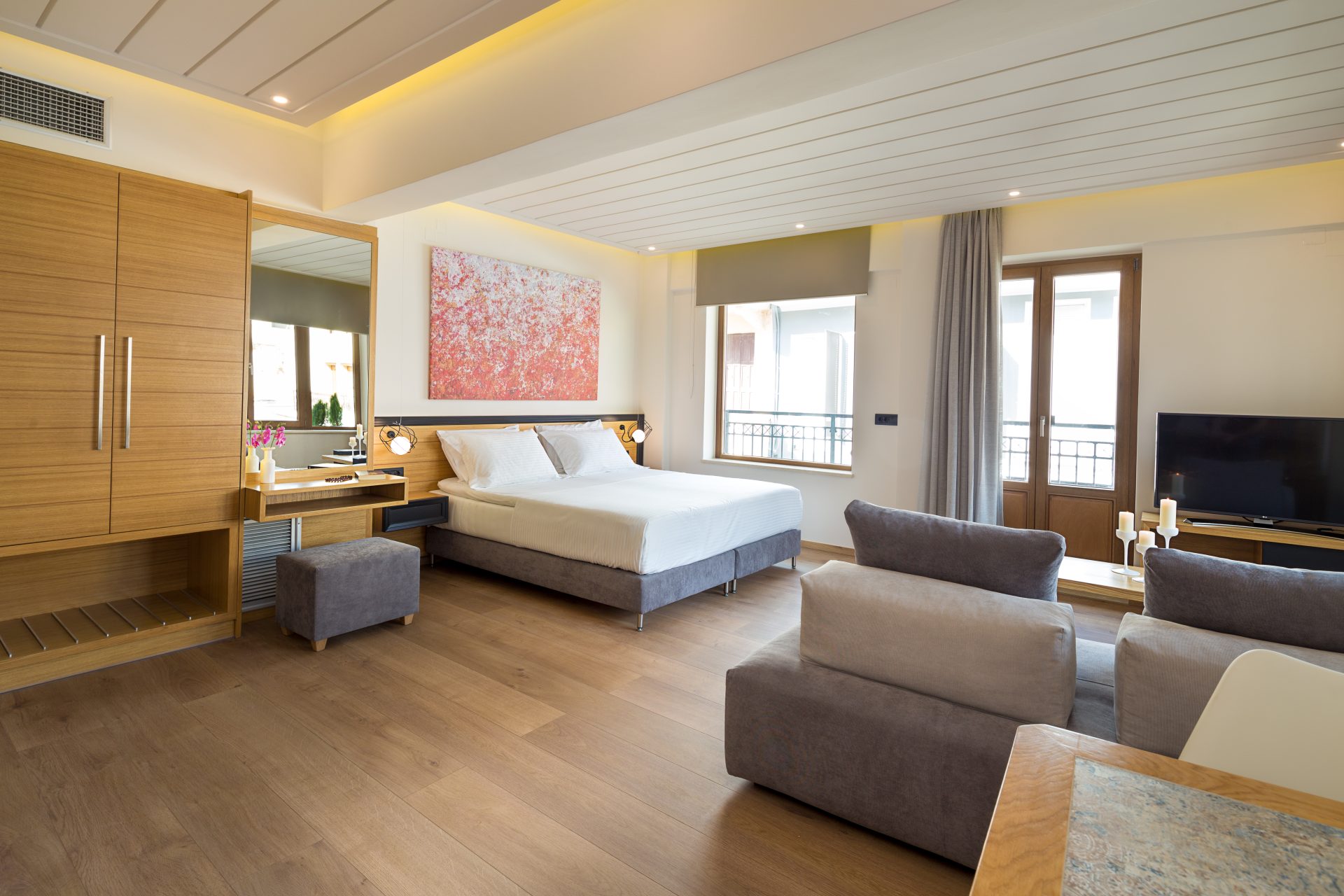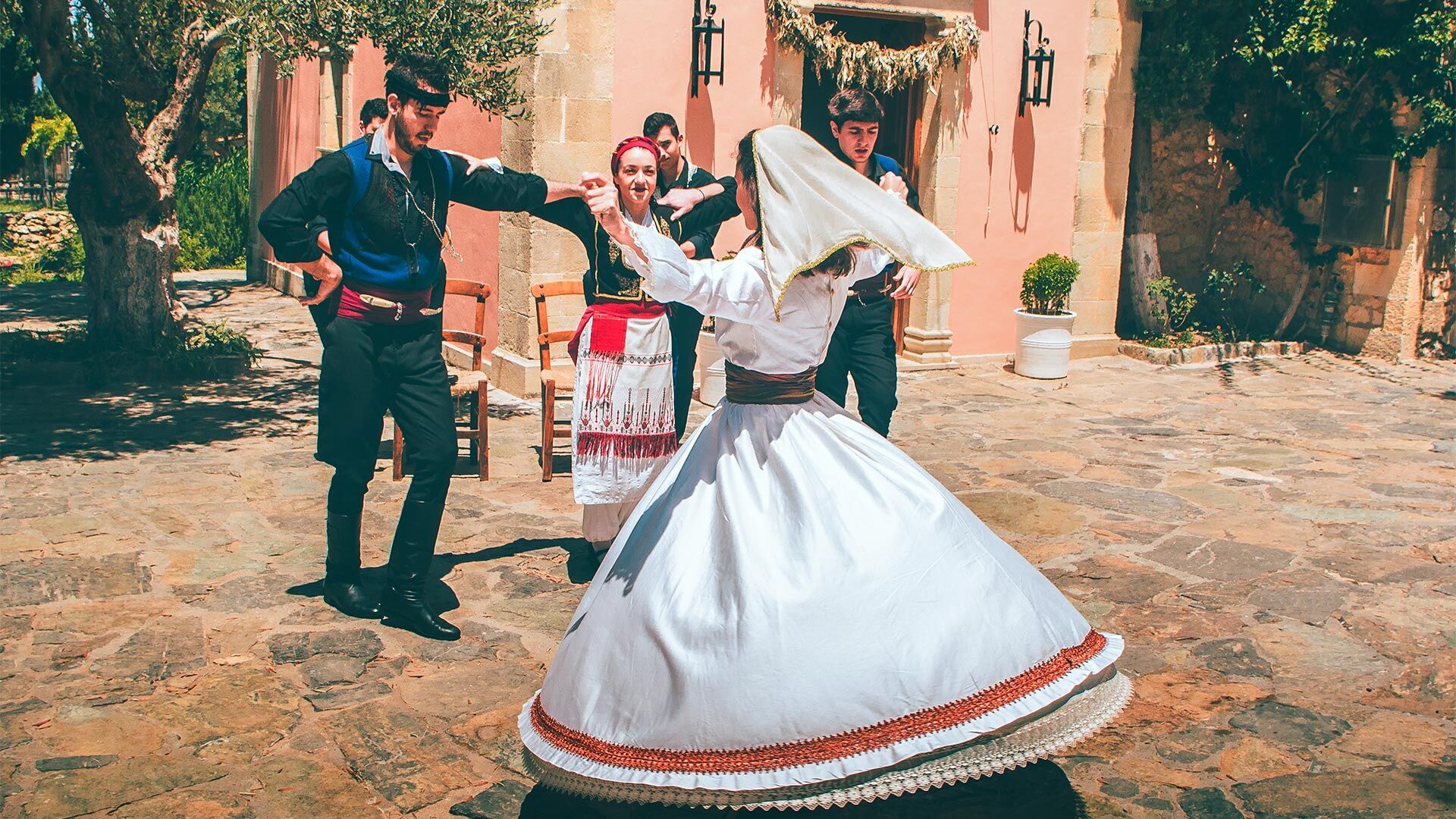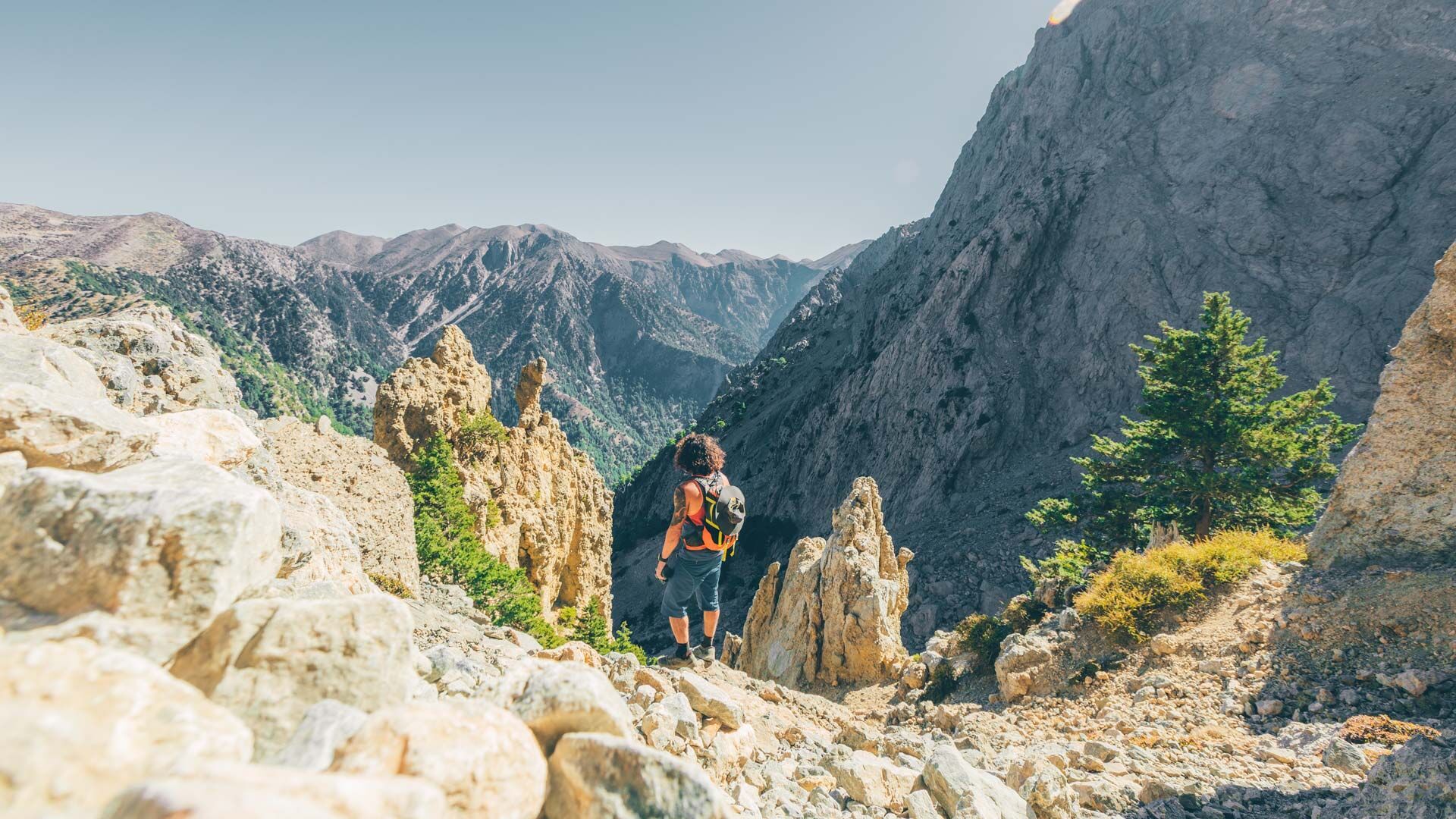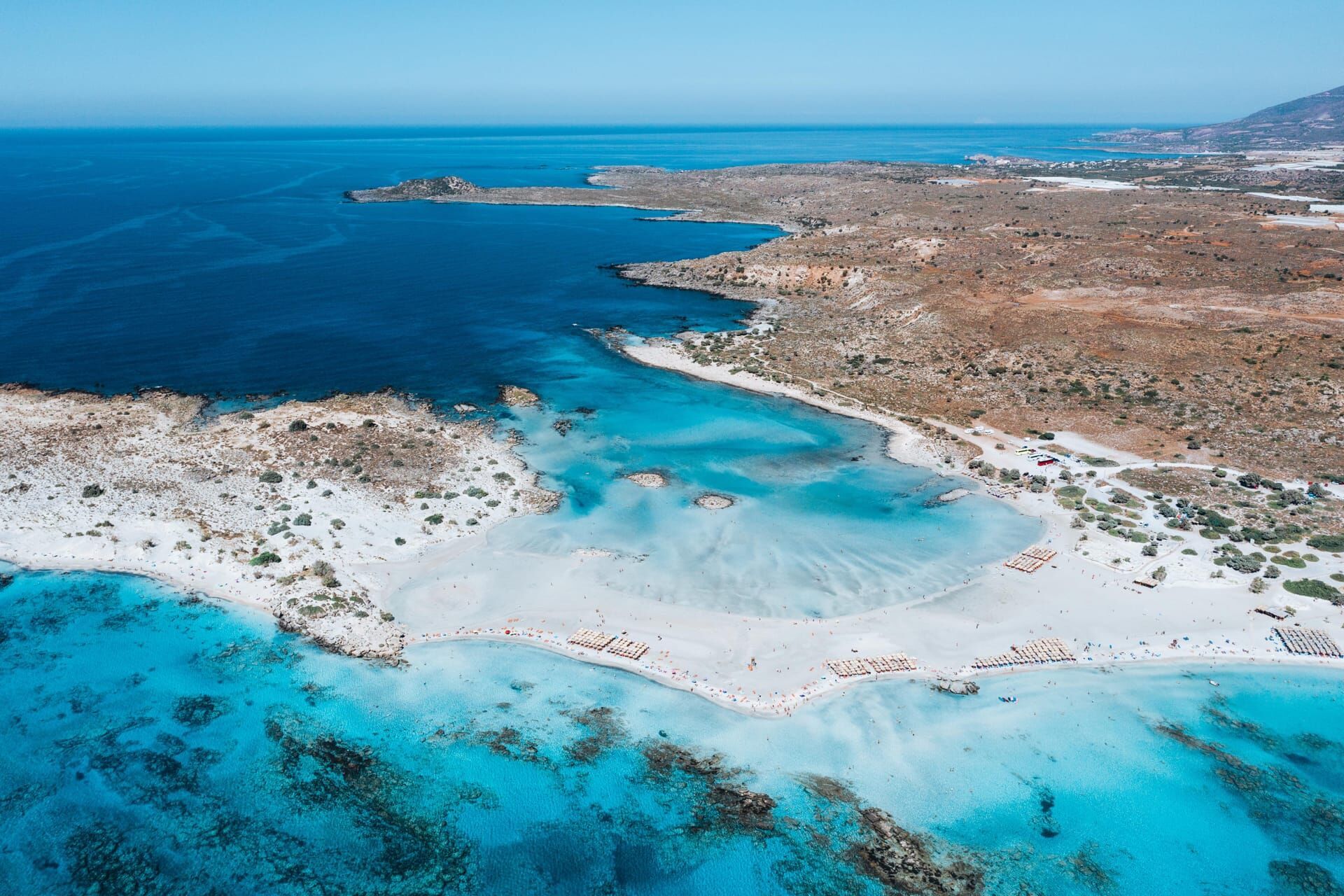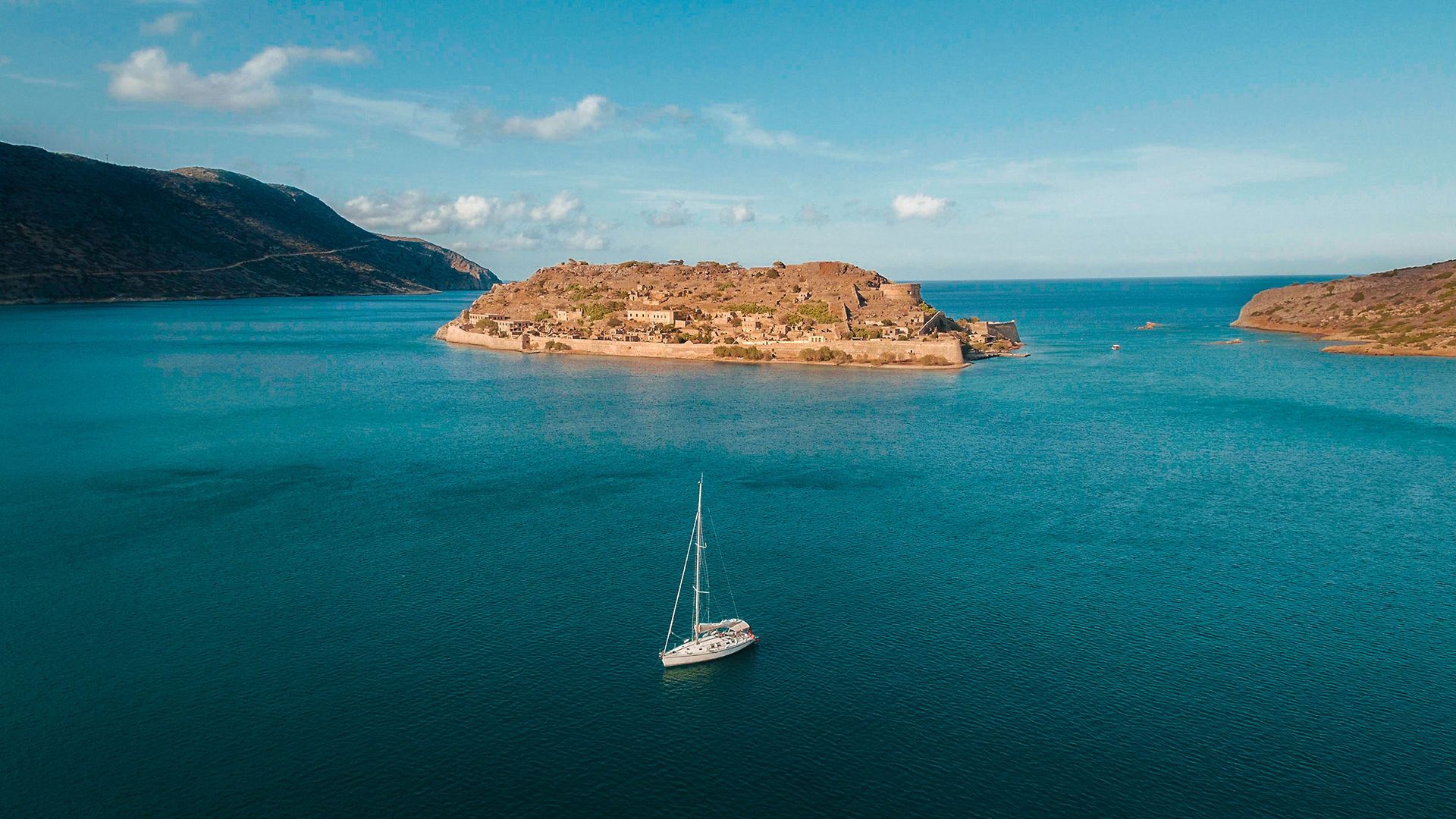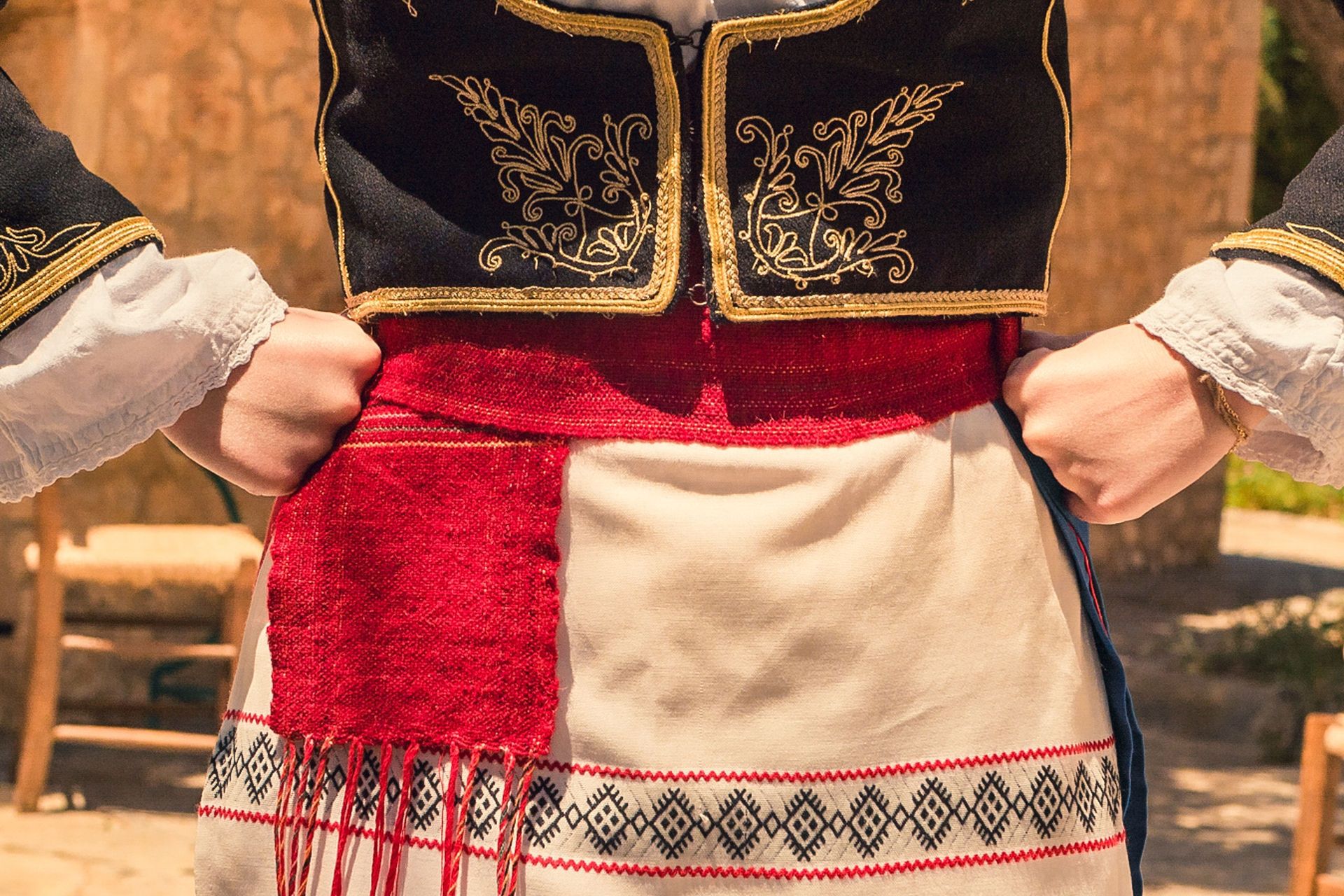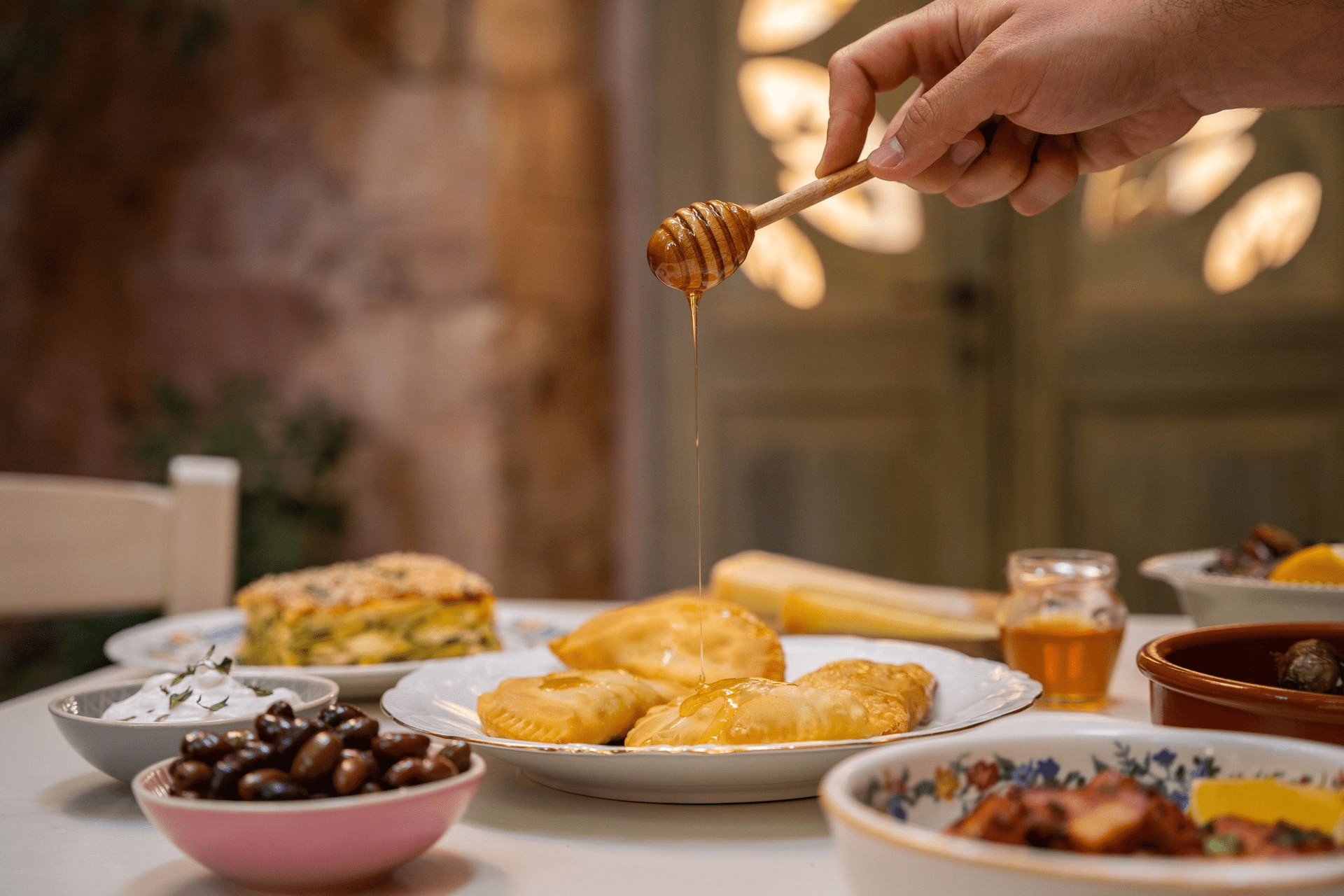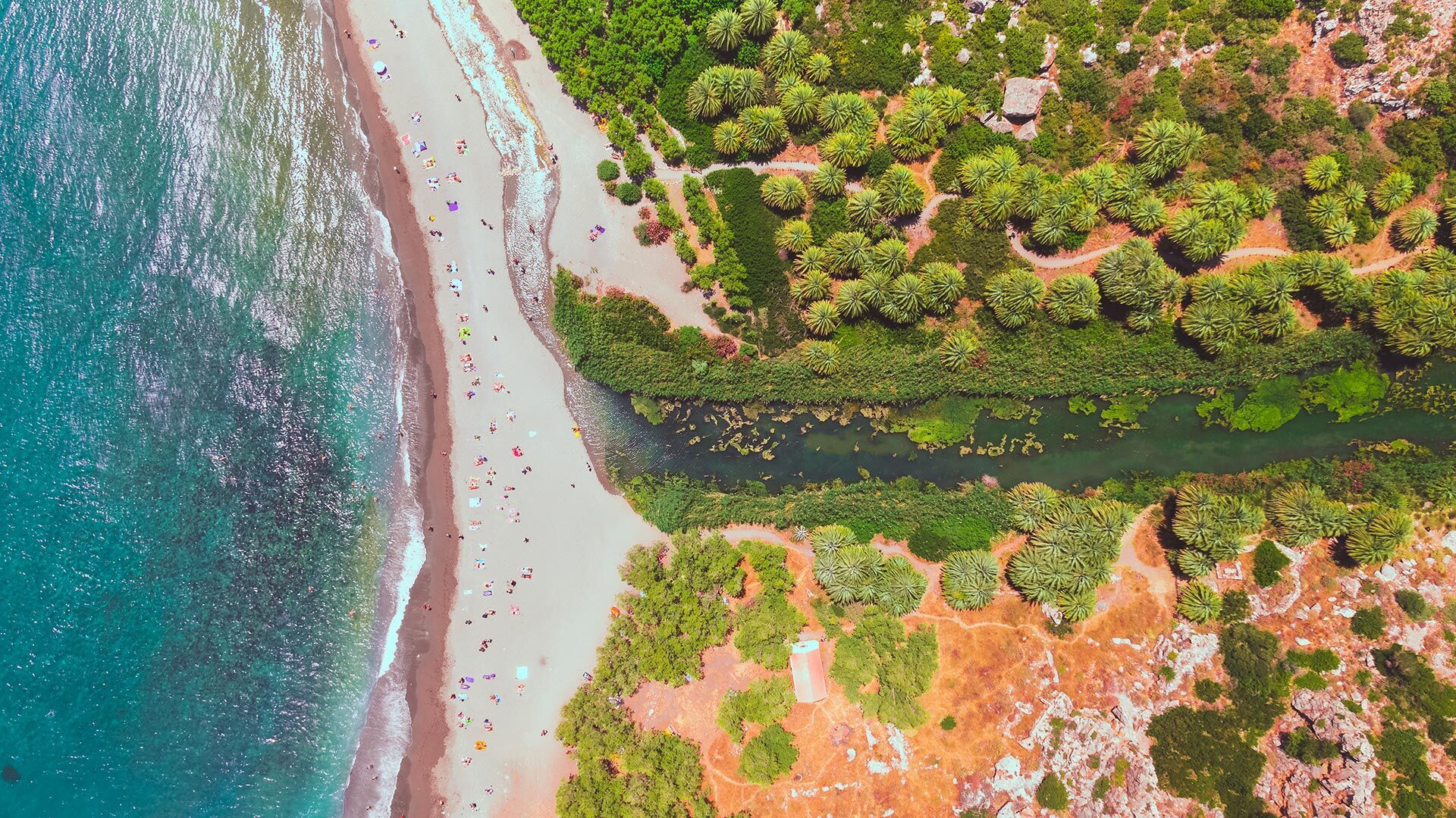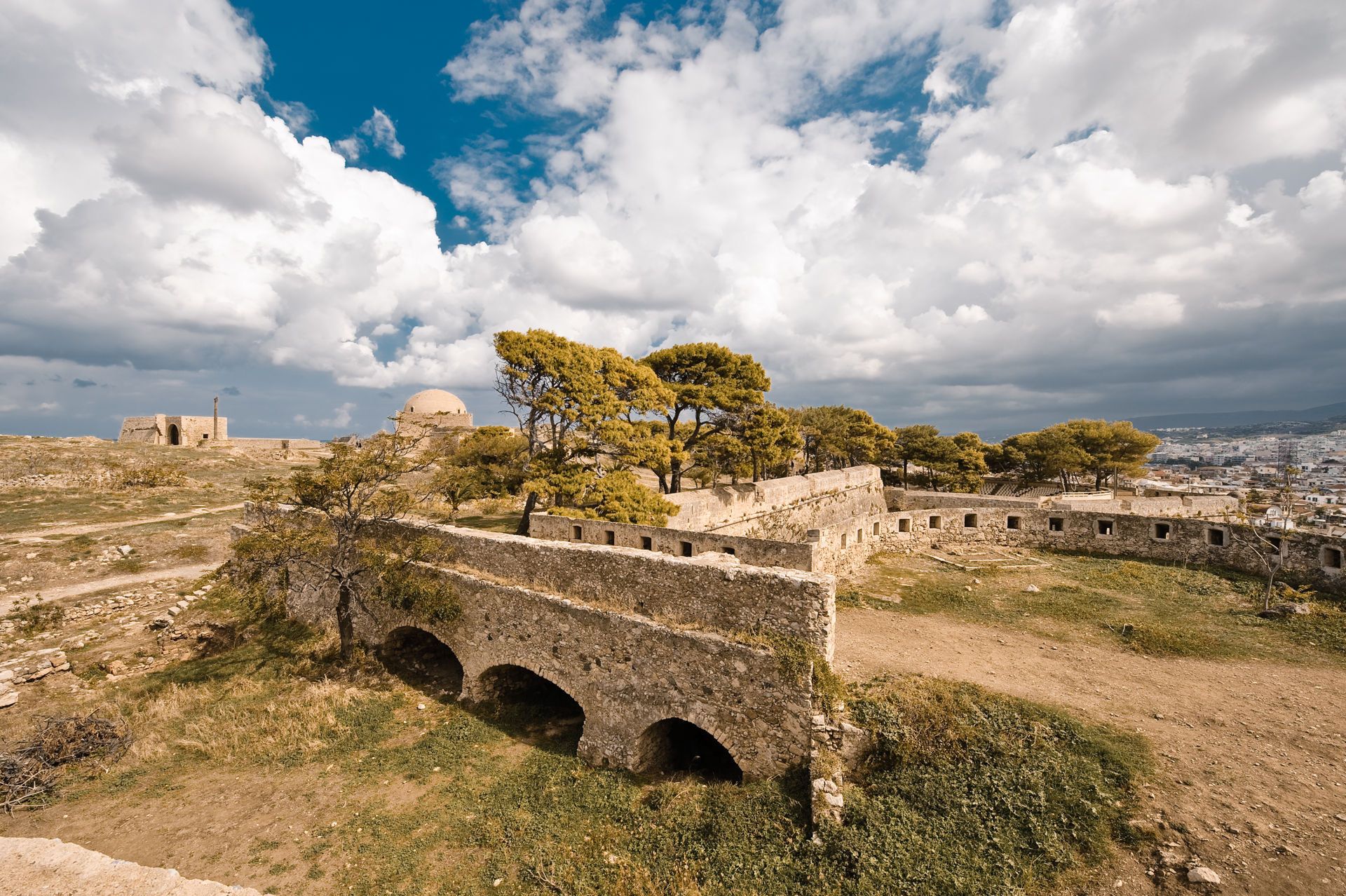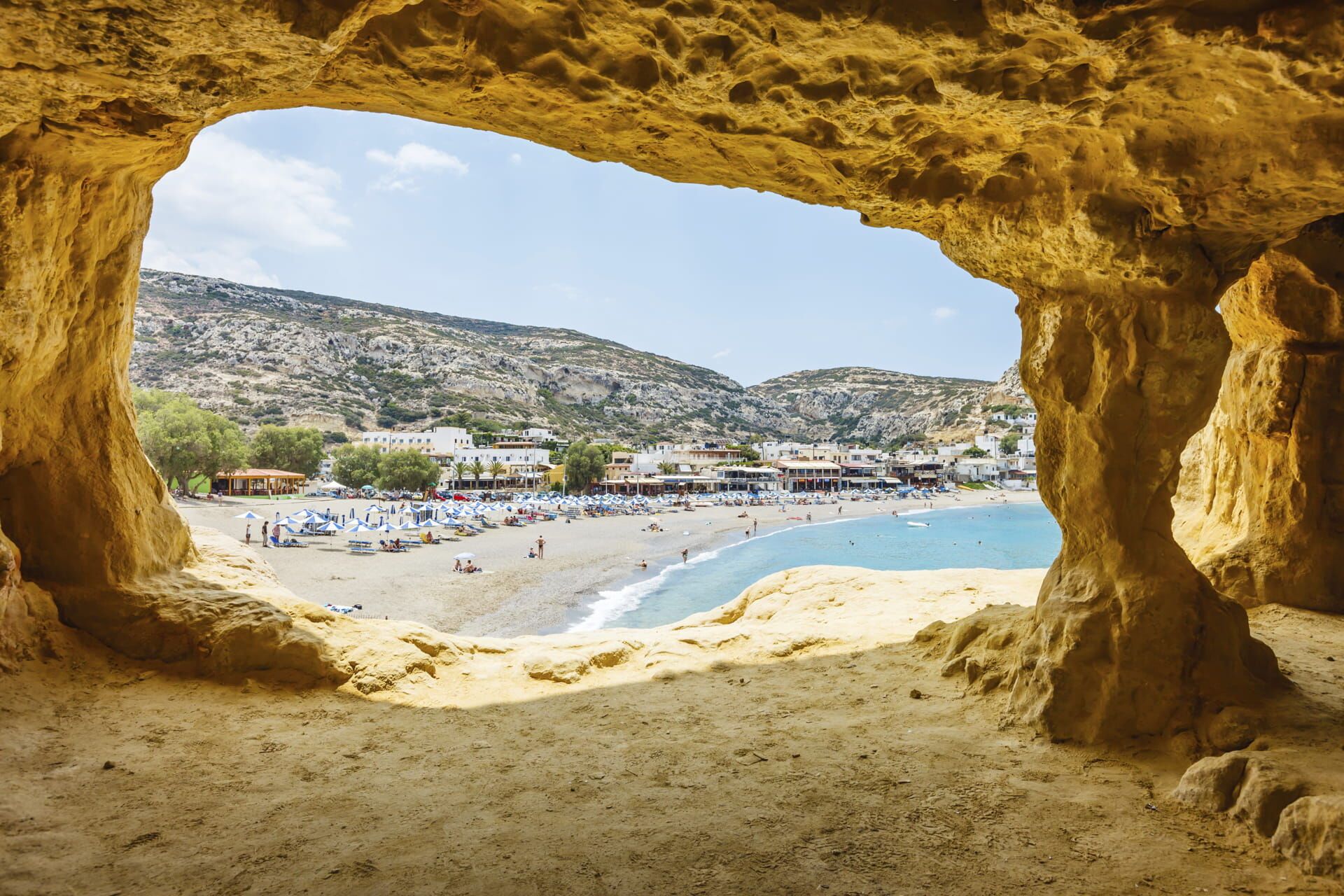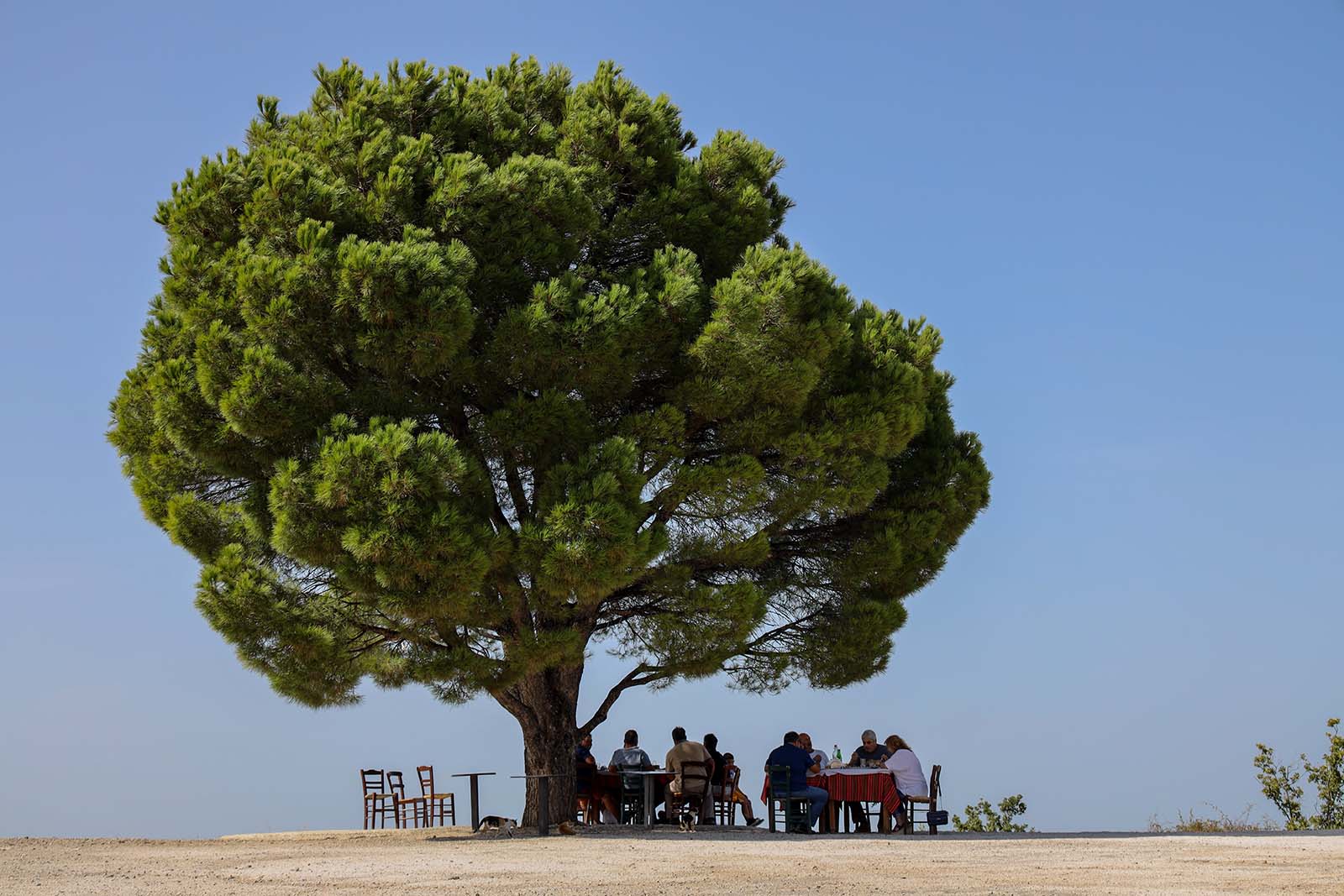Chania, the second largest city of Crete and the capital of the Chania regional unit, makes the ideal base to explore gorgeous beaches, mountain villages and the hiking trails of Western Crete. It lies along the north coast of the island, about 70 km (43 mi) west of Rethymno and 145 km (90 mi) west of Heraklion.
The city of Chania can be divided into two parts: the old town and the modern city which is the larger one. The old town is situated next to the old harbour and is the matrix around which the whole urban area was developed. It used to be surrounded by the old Venetian fortifications that started to be built in 1538; of them the eastern and western parts have survived. From the south, the old town is continuous with the new, and from the north the physical border is the sea. The centre of the modern city is the area extending next to the old town and especially towards the south.
Chania is also characterized by a rich cultural life with yearly festivities, music festivals and galleries that are home to all kinds of art. The Venetian port provides pleasant promenades and attracts many visitors throughout the year with many seafront bars and restaurants. The districts of the city outside the walls still preserve the architectural style of their Venetian nobility. Narrow passages surrounded by elegant houses from various periods abound.
The old town
Despite being heavily bombed during World War II, Chania’s Old Town is considered the most beautiful urban district on Crete, especially the crumbling Venetian harbour. The borders of the Old Town are the mostly destroyed old Venetian wall and this has been the cradle of all the civilizations which were developed in the area. The central part of the old town is named Kasteli and has been inhabited since Neolithic times. It is located on a small hill right next to the seafront and has always been the ideal place for a settlement due to its secure position, its location next to the harbour and its proximity to the fertile valley in the south. Nowadays it is a bit more quiet than the neighbouring areas of the west part of the district. The Splantzia quarter (next to the east part of Kasteli) is also largely untouched and very atmospheric.
The beautiful city of Chania has preserved its original colours and historical character, throughout time. It is considered one of the most beautiful cities in Greece and the most picturesque city of Crete.
The Venetian, Turkish and modern architectures all combine harmoniously to create a unique attraction for visitors. The town also features archaeological sites, temples, and numerous cultural attractions.
The modern city
The modern part of Chania is where most locals live and work. It is less traditional than the old town, but there are still areas of charming beauty or of some historical interest. The oldest district (early 18th century) of the modern city is Nea Hora (meaning “New Town”) which is located beyond the west end of the old town. It is a developing area, but also a very picturesque one, with narrow old lanes leading to a small fishing harbour. During the same era the district of Halepa begun to grow to the east of the city and used to be home for the local aristocracy. Some of the historical buildings of the area (including old embassies of foreign countries) had been destroyed or abandoned during the later decades of the 20th century, and it was only recently when some interest was shown for the restoration of the remaining ones.
Heraklion is the largest city and the administrative capital of the island of Crete. It is also one of the largest cities in Greece and extends over an area of 684.3 km2.
It is close to the ruins of the Bronze Age palace of Knossos, also known as the Palace of Minos, which in Minoan times was the largest centre of population on Crete. Though there is no archaeological evidence of it, Knossos may well have had a port at the site of Heraklion as early as 2000 BC.
The name
The Arab raiders from Andalusia (Iberia) who founded the Emirate of Crete moved the island’s capital from Gortyna to a new castle they called ‘Castle of the Moat’ in the 820s. This was hellenized as “Χάνδαξ” (Khandax) or “Χάνδακας” (Khandakas) and latinized as Candia, which was taken into other European languages: in Italian and Latin as Candia, in French as Candie, in English as Candy, all of which could refer to the island of Crete as a whole as well as to the city alone; the Ottoman name was Kandiye.
After the Byzantine reconquest, the city was locally known as Megalo Kastro (‘Big Castle’ in Greek) or Castro and its inhabitants were called Kastrinoi or Castrini (‘castle-dwellers’ in Greek). The ancient name Heraklion was revived in the 19th century and comes from the nearby Roman port of Heracleum (“Heracles’s city”), whose exact location is unknown.

